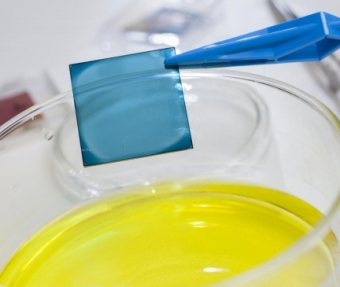
From the article "Solar Cell Game Changer" in the UCSB Current, written by Julie Cohen:
With a new technique for manufacturing single-layer organic polymer solar cells, scientists at UC Santa Barbara and three other universities might very well move organic photovoltaics into a whole new generation of wearable devices and enable small-scale distributed power generation.
The simple doping solution-based process involves briefly immersing organic semiconductor films in a solution at room temperature. This technique, which could replace a more complex approach that requires vacuum processing, has the potential to affect many device platforms, including organic printed electronics, sensors, photodetectors and light-emitting diodes. The researchers’ findings appear in the journal Nature Materials.
“Because the new process is simple to use, general in terms of applicability and should be configurable into mass productions, it has the potential to greatly accelerate the widespread implementation of plastic electronics, of which solar cells are one example,” said co-author Guillermo Bazan, director of UCSB’s Center for Polymers and Organic Solids. “One can see impacts in technologies ranging from light-emitting devices to transistors to transparent solar cells that can be incorporated into building design or greenhouses.”
Studied in many academic and industrial laboratories for two decades, organic solar cells have experienced a continuous and steady improvement in their power conversion efficiency with laboratory values reaching 13 percent compared to around 20 percent for commercial silicon-based cells. Though polymer-based cells are currently less efficient, they require less energy to produce than silicon cells and can be more easily recycled at the end of their lifetimes.
Please read the entire article at the UCSB Current.



